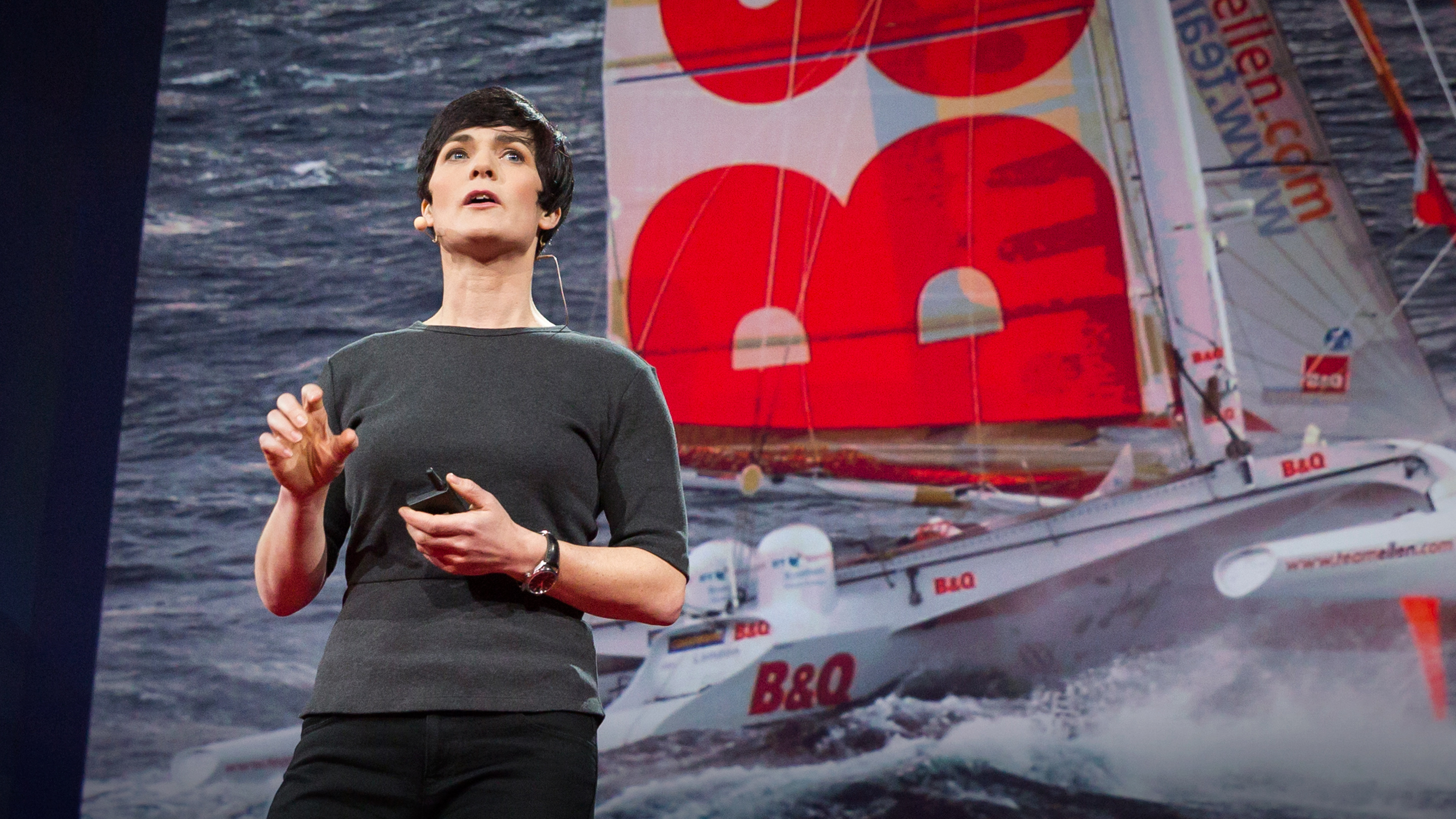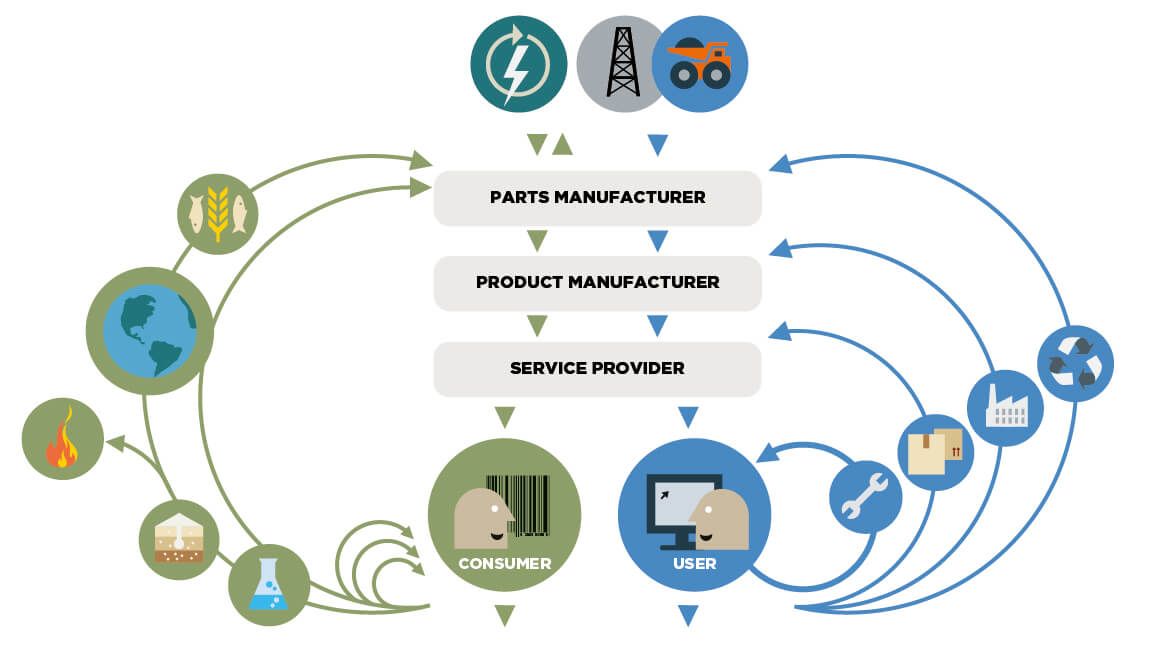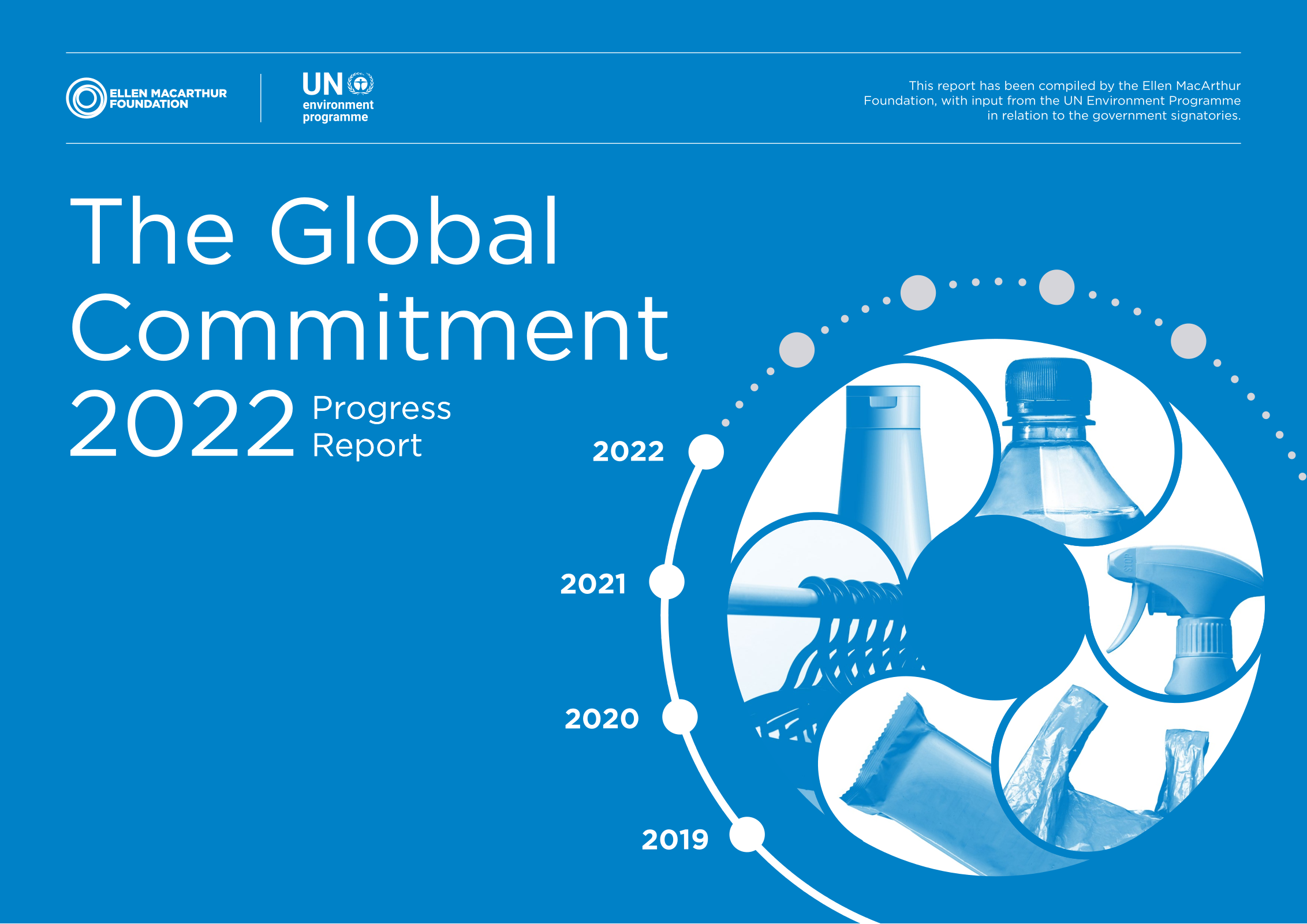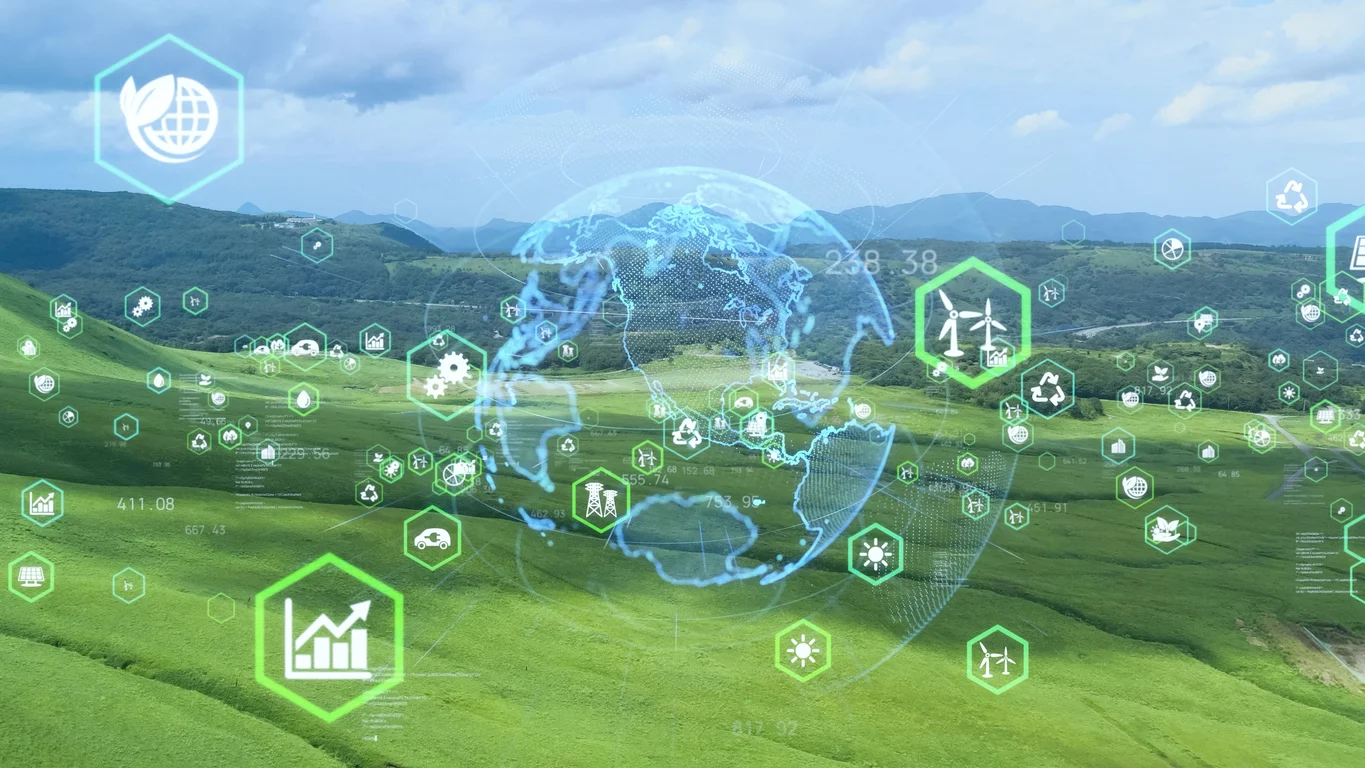Whether you’re in the beauty and cosmetic industry like L’Oreal or the food and beverage industry like Coca-Cola, you should know about the Ellen MacArthur Foundation, and more importantly the empowering woman that is Dame Ellen MacArthur herself.
Ellen MacArthur didn’t start as a sustainability expert but still managed to build a leading global organization dedicated to accelerating the transition to a circular economy.
With sustainability at the forefront, the Ellen MacArthur Foundation has worked with companies worldwide, enabling them to rethink and redesign how they run their businesses to be more circular.
In this blog, we discuss:
- Background on the Ellen MacArthur Foundation
- What is the Circular Economy?
- The Importance of the Circular Economy
- Where Sustainability and Environmental Change Stand Today
- The Foundation’s Approach to Promoting a Circular Economy
- The Ellen MacArthur Foundation and The Global Commitment
- The Biggest Hurdles Preventing Change and How Companies and Consumers Can Work to Overcome Them
- The Value of Data in Driving Sustainable Change

Background on the Ellen MacArthur Foundation
Believe it or not, Dame Ellen MacArthur is a former professional sailor. And not only was she a pro she also broke the world record for the fastest solar circumnavigation of the globe in 2005 – talk about impressive!
In her TED Talk on the topic, she spoke about how she became fascinated with sustainability and resource efficiency during her sailing expeditions.
She quickly realized she would have to pack everything she needed for the journey if she wanted to survive, which took both strategy and a lot of planning. And although this was not easy it brought Ellen MacArthur on an adventure full of life-changing discoveries…

Witnessing it firsthand, MacArthur saw the fragility of the natural environment and the impact of human activity on the oceans and biodiversity.
She had a realization that the world is faced with a finite number of resources and that our current economy is linear in that we extract resources, make things, and then throw them away – an unsustainable model.
And with that MacArthur decided to question and challenge these business models with the ideas of circular design, ultimately setting out to create what we now know as the Ellen MacArthur Foundation.
History and Mission
In 2009, after retiring from professional sailing, MacArthur started to move the needle on her valuable realizations, founding the Ellen MacArthur Foundation in 2010.
Built on the premise that a circular economy was necessary to create a more sustainable future, MacArthur set out to redesign what most people thought of as sustainable.
The foundation started as a small organization with a handful of employees, but quickly gained recognition for its work on the circular economy. Funding and support from businesses, governments, and other organizations helped the Ellen MacArthur Foundation push the limits of its research and findings, and expand its global network of partners and supporters.
With an initial mission to raise awareness of the benefits of a circular economy and to drive systemic change toward this new economic model, the foundation has since become a leading voice on the topic of the circular economy.
Since its formation, the Ellen MacArthur Foundation’s work has been recognized with numerous awards and accolades. And further credibility has been built through collaborations with businesses, governments, and academia, to develop practical solutions and promote the adoption of circular economic activity around the world.
Whether it’s designing products for circularity, creating closed-loop supply chains, or developing new business models to prioritize sustainability, there is no challenge too big when it comes to The Ellen MacArthur Foundation.
What is the Circular Economy?
Now you be wondering…
What is a circular economy?
Simply put, the idea of a circular economy can be defined as a regenerative economic model that aims to eliminate waste, such as plastic pollution, and maximize resource use by keeping raw materials and products in use through processes like reuse, refurbishment, remanufacturing, and composting for as long as possible, but this definition may look different for every individual company.
In contrast to the traditional linear economy, which is based on a take-make-dispose model, the circular economy seeks to create a closed-loop system in which resources are continuously reused, recycled, and regenerated to reduce their environmental impacts.
At the heart of the circular economy is the idea of redesigning all industrial ecosystems to eliminate waste and pollution at all stages of a product’s lifecycle.
To do so companies may consider eliminating single-use products and creating items that owners can reuse or are compostable. Not only is waste reduction critical to building a circular economy but so is extending material life spans.

By keeping materials in use through reuse and plastics recycling, we can reduce the need for new resources and in return decrease the amount of waste in landfills.
As decision-makers push to eliminate linear economic systems and implement a circular economy, companies around the world will be empowered to regenerate value from waste streams.
Rather than seeing waste as a problem, companies that use a circular business model can use waste as a valuable resource utilized to create new products and services.
Although this commitment is no easy task, as MacArthur saw firsthand, it’s a necessary change we must take to build a more sustainable and resilient global economy that benefits natural systems and human health and well-being.
The Importance of the Circular Economy
In a world faced with climate change and environmental uncertainty, taking steps to improve global impacts on planet Earth is critical.
The circular economy is an important concept because it offers a new vision for economic growth that is more sustainable and equitable than the traditional linear economy.
As many companies have found out the hard way, resources are finite, and environmental degradation is detrimental to everyone involved.
However, implementing the circular economy seeks to break this cycle by promoting more sustainable production, consumption, and end-of-life patterns.
Companies that can find supplements for plastic packaging or reduce overall plastic waste are taking the right steps in this journey toward a more circular economy.
By creating an action plan focused on reducing waste, emissions, and plastic pollution, businesses can start to mitigate climate change, reduce greenhouse gas emissions, protect natural resources, and decrease biodiversity loss.
Environmental benefits aside, there are also many economic benefits companies using a circular economy may see…
By keeping resources in use for longer and reducing waste, the circular economy can help to reduce pressure on finite resources, such as fossil fuels and plastic, and improve overall resource efficiency, and as a result, reduce costs and supply and value chain pressures for businesses.
The circular economy’s new approach to economic growth prioritizes sustainability, resource efficiency, and equity, helping businesses maintain their competitiveness…
And in an unpredictable world full of environmental and social challenges, such a circular economy approach is more than necessary.
Where Sustainability and Environmental Change Stand Today
The current state of sustainability and environmental change in today’s world is both urgent and complex. Over the years, awareness around the topic has risen, and progress has been made, although this has been accompanied by significant challenges.
Globally, companies are moving beyond just discussions around sustainability and truly working to implement it into their products, services, and supply chain practices – an expectation being pushed by all stakeholders.
Beyond increasing regulatory standards, investors and consumers are also looking for change, not wanting to work with companies that aren’t prioritizing sustainability. In Specright’s recent sustainability survey, results showed that more than half (58%) of consumers indicated they are willing to spend more money on products that are deemed sustainable or environmentally friendly.
Trends toward more sustainable and resilient business models are becoming less and less niche, yet companies in every industry still struggle to see progress toward their sustainability goals.
The Foundation’s Approach to Promoting a Circular Economy
The Ellen MacArthur Foundation takes a multi-faceted approach to promote a circular economy, but it’s all built on a global network and a deep commitment to the cause.
Businesses, non-profit organizations, and academia committed to the circular economy are the core foundation in promoting collaboration and knowledge-sharing to catalyze this much-needed change.
By bringing together leaders from different sectors, such as electronics and ICT, plastics, textiles, and construction, MacArthur herself believes that we can accelerate the transition to a circular economy. And this belief is reflected directly in her vocal advocacy…
MacArthur regularly speaks at conferences and events around the world, using the tools of education and advocacy to build momentum around commitments to the foundation.
Additionally, the foundation works hand in hand with policymakers, business leaders, and the general public to not only educate about the benefits of a circular economy but to propose practical steps that can be taken to implement it.
The Ellen MacArthur Foundation also conducts research and analysis to identify key challenges and opportunities in the transition to a circular economy.
As we all know the topic of sustainability is ever-changing but with the help of ongoing research the foundation has been able to develop practical tools and frameworks to adapt to these changes.
And The Ellen MacArthur Foundation’s commitments don’t stop there…
A strong proponent of innovation and entrepreneurship as drivers of the circular economy, MacArthur has also established a number of programs to support entrepreneurs who are developing circular business models and building partnerships between entrepreneurs, investors, and mentors who might be able to help scale the business.
Overall, The Ellen MacArthur Foundation’s approach to promoting a circular economy is both holistic and collaborative and sends the message that stakeholders must come together in order to achieve the goal of creating a more sustainable and resilient future.
The Ellen MacArthur Foundation and The Global Commitment
As mentioned before, the Ellen MacArthur Foundation, established back in 2010 after alarming research was discovered about the harm of plastic pollution, aims to accelerate the transition toward a circular economy where resources are used for as long as possible.
To encourage organizations to do so, the foundation laid out its Global Commitment framework, giving companies a clear set of initiatives they can implement to help meet the organization’s overarching goals.
Simply put, The Global Commitment is a commitment from businesses and governments to change how they produce, use, and reuse plastic by 2025, driven by the Ellen MacArthur Foundation and the United Nations Environment Programme.

The Global Commitment covers four key areas: packaging, food systems, the fashion industry, and plastic waste. Companies taking the commitment have been challenged to come up with innovative circular solutions for reducing their single-use plastic through the discovery of new materials, implementation of unique business models, using renewable resources like renewable energy, and more.
And it’s important to note that global commitments such as those related to the Ellen MacArthur Foundation take more than just a verbal obligation.
Companies must track progress, share best practices, and continue to improve their circular economy strategies continually.
In collaboration with the UN Environment Programme, The Ellen MacArthur Foundation’s Global commitments have brought together over 1,000 organizations from across the world, looking to achieve the common goal of tackling plastic pollution. Today, the Global Commitment is the largest voluntary effort to tackle waste and plastic waste in the world.
What The Global Commitment Has Shown Us So Far
Recently, the Ellen MacArthur Foundation released it’s The Global Commitment Five Years In paper, displaying the progress that has been made and where the pieces are still missing. The results are unfortunate, yet not shocking to most.
The paper revealed that despite much progress that has been made, the Global Commitment and its signatories will likely not meet its 2025 goals. Despite numerous positive efforts toward change and reducing plastic waste, the data shows that to truly eliminate plastic waste and its pollution, reinforcement of these efforts must be pushed to the next level.
Governments and organizations need to implement regular and policy measures to hold organizations accountable, making pollution reduction a must for companies. With the passing of global regulations and measures, countries may be able to make final pushes toward a circular economy by 2025, but change has to happen now.
On the bright side, the Global Commitment over the past 5 years has shown us that businesses that are willing to reinvent their business models to incorporate sustainable development goals can drive change. But change can no longer wait, with the state of today’s pollution crisis and only 3 years left to meet commitments.
The Biggest Hurdles Preventing Change and How Companies and Consumers Can Work to Overcome Them
Research conducted by the Ellen MacArthur Foundation has shown that some standout barriers have prevented progress in meeting goals over the last five years. The following list looks at the most significant barriers and how your company can work to overcome them in an attempt to meet goals by 2030.
Elimination of Single-Use Plastic Models
At the core of the numerous challenges preventing organizations from meeting their global commitments is single-use plastic. Single-use plastic models are the number one contributor to plastic waste and are significantly stunting the success of Ellen MacArthur’s global commitments.
It would be great if we could eliminate plastic packaging altogether, but the reality is that most products cannot get from point A to point B without some sort of packaging. With this being said, it gives companies an exciting opportunity for innovation and the use of reusable packaging.
Just shifting to recyclable packaging materials won’t be enough to meet global commitments, the levels of global virgin plastic used must be reduced altogether. By switching to reusable packaging, businesses have the opportunity to strike both economic and environmental benefits.
Companies that can implement reuse or return packaging models will signal a strong commitment to corporate responsibility and their global commitments. This change opens a new door and allows companies to differentiate themselves with new and sustainable solutions.
Reducing Flexible Plastic Packaging Waste
Flexible packaging refers to any package made of flexible or readily pliable materials. They are commonly used in wrappers, pouches, and other consumer products due to their adaptability – think about food and beverage packaging.
Benefits aside, flexible packaging is the largest growing type of plastic packaging and is currently the top barrier preventing 100% reusable, recyclable, or compostable packaging.
Flexible packaging commonly shows up in high-leakage regions where adequate processing infrastructure is limited. The result? Excess amounts of flexible packaging end up in oceans at exponential rates. And, even for flexible packaging that is collected, because of its makeup and design, it is partially challenging to recycle and process.
All this considered, companies should begin to innovate away from flexible packaging, through material substitutions or new packaging design. With insight into packaging materials and design, there is an opportunity for companies to eliminate unnecessary packaging or even redesign products to match different packaging models.
Building Better Infrastructure to Empower Circular Packaging
The reality is that without adequate infrastructure for the collection, sorting, and processing of these materials, tonnes of plastic will continue to end up in landfills.
Research from the Ellen MacArthur Foundation currently shows that of all plastic packaging produced, approximately one-third ends up in the environment, and more than half is landfilled or incinerated. A lot of this is due to the lack of infrastructure improvements to process these plastic materials.
In the future, measures must be taken to scale the required infrastructure so all plastic materials can be recycled. Businesses may begin to see this reflected through Extended Producer Responsibility (EPR) policies, which can speed up the process of investment in such infrastructure.
Across the nation, EPR regulations have risen to enforce policies around waste management and reduction, promoting curricular economic solutions. This considered, businesses should work to redesign their business models to meet EPR standards and stay up to date with any changes in their geographic location.
The Value of Data in Driving Sustainable Change
For you and me, a solar circumnavigation of the globe by yacht won’t be necessary to realize that our global resources are finite and plastic pollution is more than detrimental- thanks, MacArthur!
With a mission to raise awareness of the benefits of the circular economy model, the Ellen MacArthur Foundation has taken impactful strides in redesigning how the world looks at sustainability.
With well-deserved recognition, the foundation has gained commitment from businesses and governments from around the world.
But as we all know, making these commitments is no easy task, and it takes time and dedication from all members of a team.
These changes also require data – data about a company’s waste, pollution, and emissions across a business’s entire supply chain.
The shift away from a linear economy and towards a circular economy requires DNA-level data so companies can see where the necessary shifts to the commitment make both logical and economic sense.
Taking a Spec-First approach to data management will help empower companies to ensure that their materials and supply chain practices are in line with the circular economy principles and goals of Ellen MacArthur’s Global Commitment.
And with Specright, companies can do just that…
Overall, The Ellen MacArthur Foundation’s multifaceted approach to promoting a circular economy has made influential impacts on people, companies, and other organizations around the world.
And with Dame Ellen MacArthur’s grit and commitment, the foundation will push to be better, addressing whatever environmental and social challenges they may face.
You can learn more about the Ellen MacArthur Foundation here, and to learn more about how Specright can help meet the marks for The Global Commitment, request a demo.
Explore More Blogs
Get Started
With Specright’s Solution Suite, you can digitize, centralize, and link your specification data to drive efficiencies, intelligence, traceability, and collaboration within your organization and across your supply chain network.




